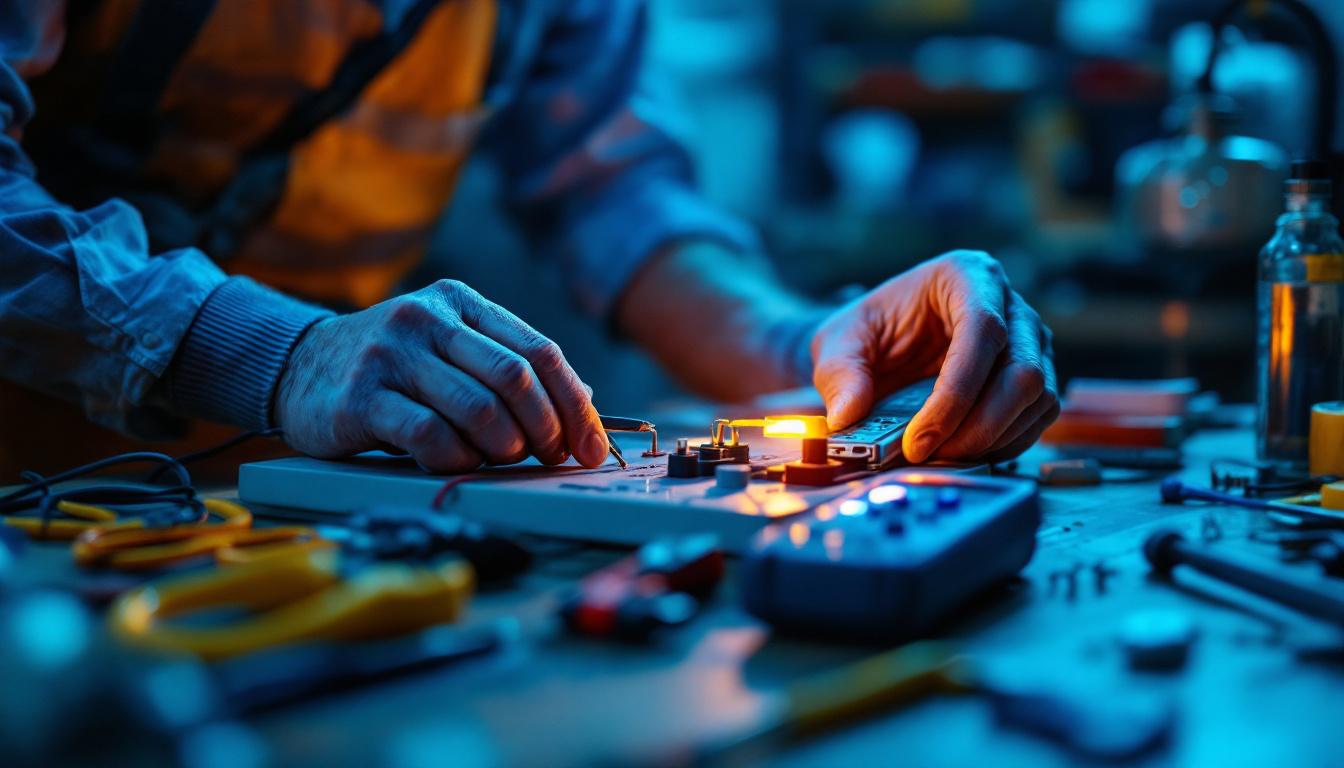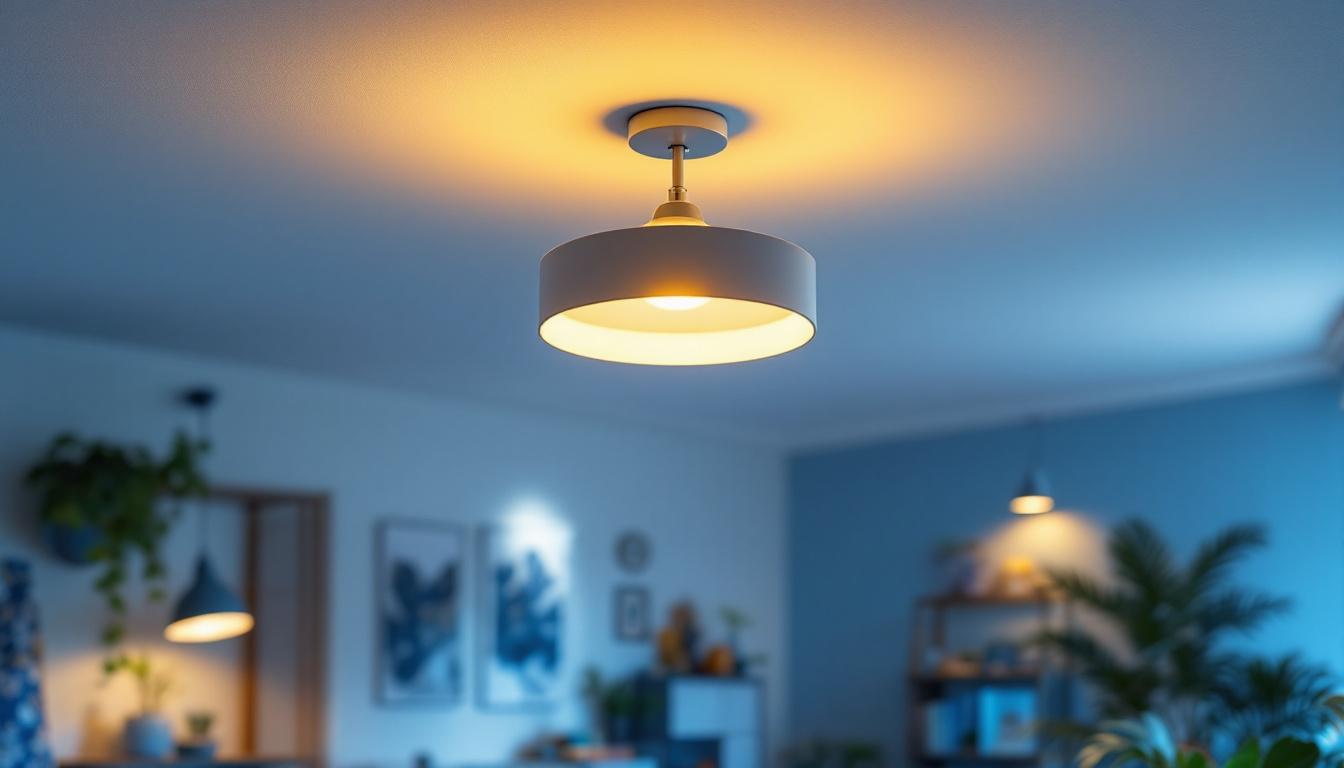
As a lighting contractor, understanding the functionality of ballasts is crucial for ensuring the efficient operation of lighting systems. Ballasts play a vital role in regulating the current to fluorescent and HID lamps, and when they fail, it can lead to a variety of issues, including flickering lights, dim illumination, or complete failure of the lighting system. This article will explore how to identify a bad ballast and the essential tools that can assist in diagnosing and resolving these issues.
Before diving into the signs of a failing ballast, it’s important to understand what a ballast does. Essentially, a ballast is an electrical device that provides the necessary voltage to start a lamp and regulates the current during operation. Without a functioning ballast, fluorescent and HID lamps cannot operate effectively, leading to poor lighting performance. In addition to starting the lamp, the ballast also helps to stabilize the electrical current flowing through the lamp, preventing it from drawing too much power, which can lead to overheating and potential failure.
Ballasts come in various types, including magnetic and electronic, each with its own set of characteristics and potential failure points. Recognizing these differences can help contractors diagnose issues more efficiently. For instance, while magnetic ballasts are known for their longevity, they often require more maintenance due to their larger size and heavier components. Conversely, electronic ballasts, while more efficient, may necessitate more frequent replacements if subjected to unstable voltage conditions. Understanding these nuances can greatly enhance the effectiveness of lighting solutions in both residential and commercial settings.
There are two primary types of ballasts: magnetic and electronic. Magnetic ballasts are older technology, often found in traditional fluorescent lighting systems. They operate using electromagnetic induction to control the current. While they are generally more durable, they can be bulky and less energy-efficient. Additionally, magnetic ballasts may require a warm-up period before achieving full brightness, which can be inconvenient in environments that demand immediate illumination.
On the other hand, electronic ballasts use electronic circuits to regulate the current. They are more compact, energy-efficient, and provide better performance in terms of flicker-free operation and instant start capabilities. However, they can be more sensitive to power surges and may fail more frequently under certain conditions. Moreover, electronic ballasts often come equipped with features such as dimming capabilities, allowing for greater control over lighting levels, which can be particularly beneficial in settings like offices or theaters where ambiance is crucial.
Recognizing the symptoms of a failing ballast is essential for timely intervention. Some common signs include:
Identifying these symptoms early can save time and resources, preventing further damage to the lighting system. Regular maintenance checks can help in catching these issues before they escalate, ensuring that the lighting remains reliable and efficient. Additionally, being proactive about ballast health can lead to energy savings and a longer lifespan for the entire lighting system, ultimately benefiting both the environment and your budget.
To effectively diagnose ballast problems, lighting contractors need a set of essential tools. These tools not only facilitate the identification of issues but also streamline the repair process.
A voltage tester is a fundamental tool for any lighting contractor. It allows for the measurement of electrical voltage in the circuit, helping to determine whether the ballast is receiving power. When using a voltage tester, it’s important to check both the input and output terminals of the ballast.
If the input side shows voltage but the output side does not, it indicates a potential failure within the ballast itself. Conversely, if there is no voltage on the input side, the issue may lie elsewhere in the electrical circuit.
A multimeter is an invaluable tool for diagnosing a variety of electrical issues, including those related to ballasts. With a multimeter, contractors can measure voltage, current, and resistance, providing a comprehensive view of the ballast’s functionality.
To test a ballast with a multimeter, follow these steps:
By analyzing these readings, contractors can determine whether the ballast is functioning correctly or if it needs replacement.
A ballast tester is a specialized tool designed specifically for testing ballasts. This device simplifies the process by providing quick and accurate readings of ballast performance. Many ballast testers can indicate whether the ballast is good, bad, or if it requires replacement.
Using a ballast tester typically involves connecting the device to the ballast and following the manufacturer’s instructions. The tester will provide a clear indication of the ballast’s status, making it easier for contractors to make informed decisions about repairs or replacements.
Diagnosing a bad ballast involves a systematic approach. By following these steps, lighting contractors can efficiently identify and address ballast issues.
The first step in diagnosing a ballast is to conduct a visual inspection. Look for any signs of physical damage, such as burns, leaks, or corrosion. A damaged ballast may exhibit discoloration or bulging, indicating internal failure.
Additionally, check the wiring connections to ensure they are secure and free from damage. Loose or frayed wires can lead to poor performance and should be addressed before further testing.
Once the visual inspection is complete, use a voltage tester to check if the ballast is receiving power. If the input side shows voltage, proceed to test the output side. A lack of voltage on the output side typically indicates a failed ballast.
If there is no voltage on the input side, investigate the circuit further to identify potential issues, such as blown fuses or tripped breakers.
Using a multimeter, measure the resistance at the output terminals of the ballast. A reading of zero or infinite resistance can indicate a problem. Compare the readings to the manufacturer’s specifications to determine if the ballast is functioning within acceptable limits.
In some cases, it may be necessary to test the lamp itself, as a faulty lamp can mimic the symptoms of a bad ballast. Ensure that the lamp is in good condition before concluding that the ballast is at fault.
After completing the diagnostic process, the next step is to determine whether to replace the ballast. Several factors can influence this decision.
The age of the ballast is a significant factor in determining whether it should be replaced. Older magnetic ballasts, in particular, may be more prone to failure and less energy-efficient than newer electronic models. If the ballast is several years old and showing signs of failure, replacement may be the most cost-effective solution.
Contractors should also consider the cost of repair versus replacement. If the ballast is relatively inexpensive and easy to replace, it may be worth opting for a new unit rather than attempting repairs. Conversely, if the ballast is part of a larger, integrated lighting system, repairs may be more feasible.
Energy efficiency is another important consideration. Upgrading to a newer, more efficient ballast can lead to long-term savings on energy costs. If the existing ballast is outdated and inefficient, replacing it with a modern electronic ballast could provide significant benefits.
Preventative maintenance can extend the life of ballasts and reduce the likelihood of failures. Implementing best practices can help contractors ensure optimal performance and reliability of lighting systems.
Conducting regular inspections of lighting systems is essential for early identification of potential issues. Check ballasts for signs of wear and tear, and test their functionality periodically. Early detection can prevent costly repairs and downtime.
The environment in which the ballast operates can significantly impact its lifespan. High temperatures, humidity, and exposure to dust can all contribute to premature failure. Ensure that ballasts are installed in suitable locations and consider using protective enclosures in harsh environments.
Staying updated on advancements in ballast technology can provide contractors with insights into the best products available. As energy efficiency standards evolve, newer ballasts may offer enhanced performance and reliability. Being informed allows contractors to make educated decisions for their clients.
Understanding how to diagnose a bad ballast is an essential skill for lighting contractors. By utilizing the right tools and following a systematic approach, contractors can identify issues quickly and efficiently. Regular maintenance and staying informed about advancements in technology can further enhance the reliability of lighting systems.
In the ever-evolving field of lighting, being proactive in diagnosing and addressing ballast issues not only improves the quality of service provided but also ensures customer satisfaction and trust. With the right knowledge and tools, lighting contractors can navigate the complexities of ballast functionality and maintain optimal lighting performance.
Ready to ensure your lighting projects shine with reliability and efficiency? Look no further than LumenWholesale for all your ballast needs. Our extensive selection of spec-grade lighting products is designed to meet the highest industry standards, providing you with the confidence that your lighting systems will perform optimally. By choosing us, you’re not just getting superior products; you’re also enjoying unbeatable wholesale prices and the convenience of free shipping on bulk orders. Don’t let inflated markups dim your project’s potential. Elevate your lighting solutions today with Wholesale Lighting at the Best Value from LumenWholesale.

Discover the essential role lamp holders play in modern lighting projects and why they are a must-have for every lighting contractor.

Discover the essentials of concert light fixtures in this comprehensive guide.

Discover the essential checklist for lighting contractors when installing outdoor recessed lights.

Discover the often-overlooked aspects of ceiling mount lighting fixtures that even seasoned contractors miss.